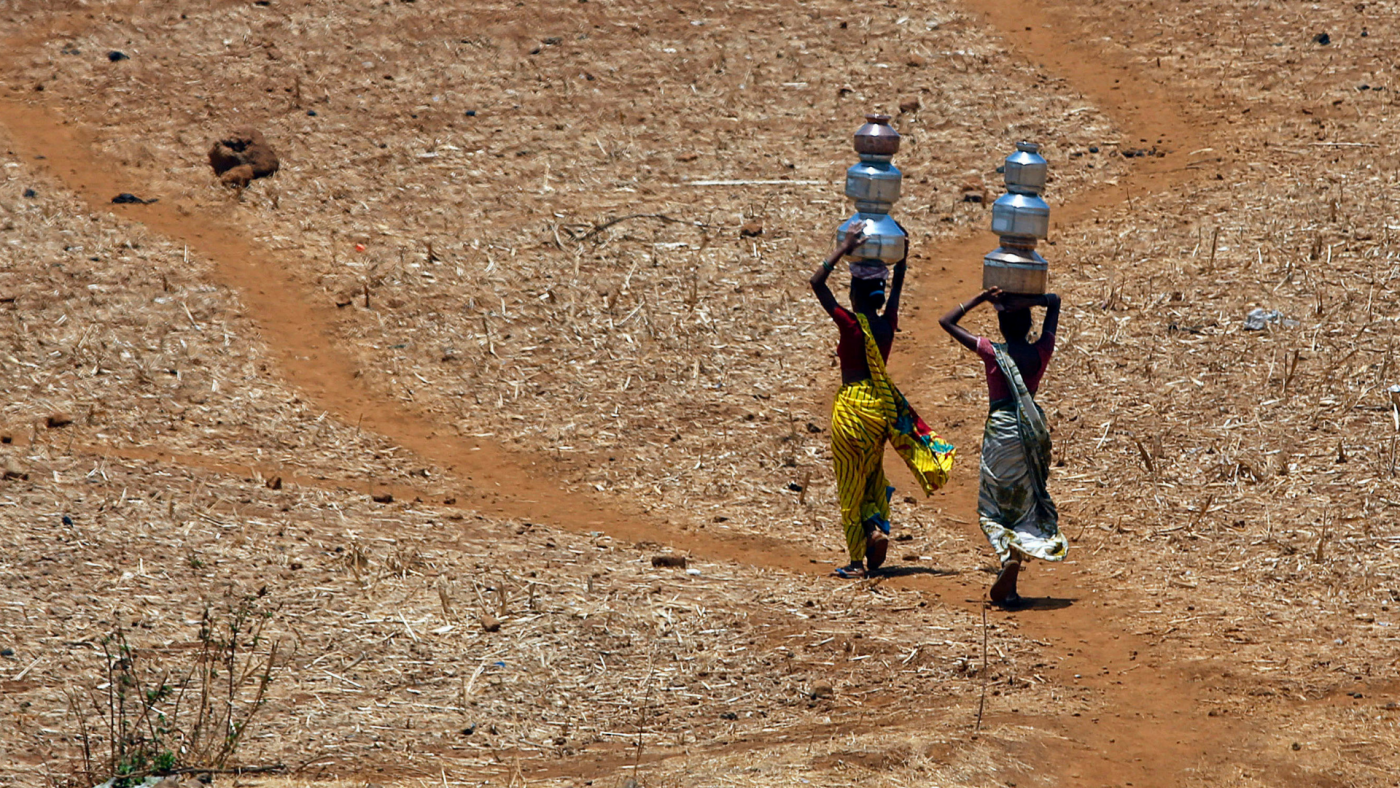Megacities such as Delhi, Chennai, Karachi, Madrid, and Istanbul are already experiencing an extremely high risk of droughts, and many other regions could follow suit over the next few years.
October 2021

Droughts have a profound impact on a nation’s economy and the everyday needs of people. Photograph by Rajanish Kakade © AP Images
Sneha Kulkarni is a 2019 Fulbright-Kalam Doctoral Research fellow at the University of Nebraska-Lincoln. Her research centers on creating an index for drought-prone areas to understand stress and, hence, to build effective mitigation strategies. Through her work as a Fulbright Scholar and as a researcher at the University of Nebraska-Lincoln, Kulkarni combats the adverse risks of droughts with technological innovations. Her work meshes into a broader U.S.-India partnership on improving water management, agricultural production and food security in drought-prone areas between the University of Nebraska-Lincoln and the Indian Agricultural Research Institute in Delhi.
In her essay, “Developing a Remote Sensing-Based Combined Drought Indicator Approach for Agricultural Drought Monitoring over Marathwada, India”, Kulkarni notes, “Droughts are one of the most devastating natural hazards over the globe, affecting millions of individuals in multiple ways, such as food security, economic losses, and migration. Megacities such as Delhi, Chennai, Karachi, Madrid, and Istanbul are already experiencing the extremely high risk of droughts, and many other regions could follow suit over the next few years.”
Numerous implications will continue to arise from the impact of droughts. In the developing countries and food-insecure areas of Asia and Africa, in particular, droughts have a profound impact on a nation’s economy and the everyday needs of people. As nearly a quarter of food production occurs within areas that are prone to droughts, populations run the risk of widespread food insecurity. India is vulnerable in this regard, with two-thirds of the population reliant upon the agricultural sector. Kulkarni believes it is necessary to monitor and evaluate drought conditions with high accuracy, helping to guide the timely development of effective mitigation strategies.
In her experience, most of the drought monitoring studies in India and elsewhere in the world are still lagging even though experts have used area-specific studies in policy management and designing region-wide drought mitigation and adaptation plans. She explains that many researchers have never implemented a large-scale or grid-based weight assignment to combine different input variables to better understand droughts.
To help deal with this issue and its growing prevalence and urgency, remote sensing and high-resolution model data have begun to play an important role in drought assessment over India. As Kulkarni explains, “The first decade of the 2000s (2001–2010) was recorded as the warmest decade for India, and ocean-atmospheric systems are projected to result in a higher frequency of droughts over the next 30 year period (2020–2050). Hence, the development of highly accurate early warning systems and drought assessment techniques are of high priority for India as attention turns to a more proactive drought response.”
Kulkarni’s present work attempts to overcome the gaps in doubt assessment with improved methodologies which “include an expert judgment-based weight of each parameter and principal component analysis (PCA)-based weighting approach.” In a particular study, secondary data for major types of crop yields in Marathwada were utilized to assess the results for the study period of moderate to extreme drought cases in the historic drought years of 2002, 2009, and 2015–2016. “This study,” explains Kulkarni, “found a significant increase in drought intensities and drought frequency over the years 2001–2018, especially in the Latur, Jalna, and Parbhani districts.”
It is essential to note that “The overarching objective of this study is to address this need through the development of an integrated agro-climatological drought monitoring approach, for example, combined drought indicator for Marathwada (CDI_M),” since better data can lead to more efficient mitigation strategies, thus leading to a better way to deal with this essential issue within India. Thanks to this innovation in monitoring, Kulkarni underlines, “the study illustrated the effectiveness of CDI_M to monitor agricultural drought in India and provide improved information to support agricultural drought management practices.”
With such innovation growing out of her work as a 2019 Fulbright-Kalam Doctoral Research fellow at the University of Nebraska-Lincoln, and continuing work on this subject, it is clear that Kulkarni is helping to make essential progress within the field. Through her ongoing research, Kulkarni will also continue to enrich the broader U.S.-India partnership aimed to improve water management, agricultural production and food security in drought-prone areas.
Trevor L. Jockims teaches writing, literature and contemporary culture at New York University.
COMMENTS